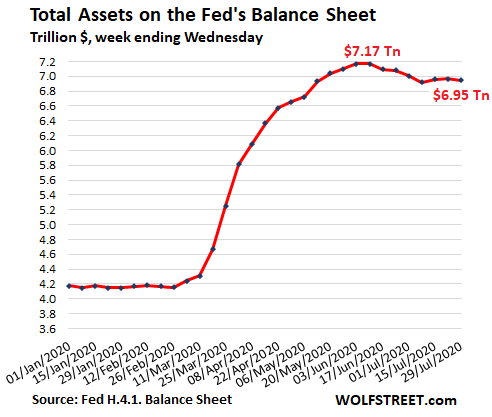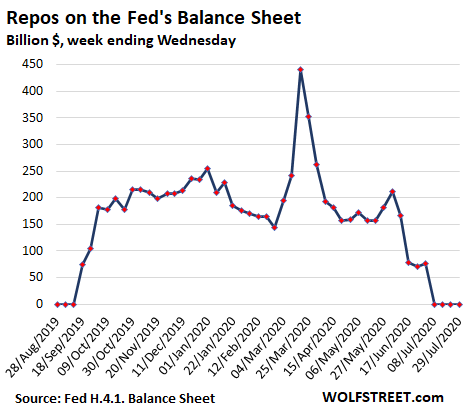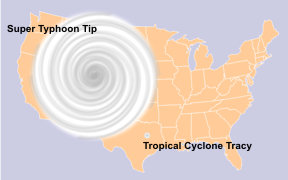And if you go back, say 100 - 150 years the death toll and acres burned
numbers are tiny (except for those who have lost a home, or a life)
Call it the "media center effect".
Every hurricane approaching New York City gets 24/7 coverage, every fire in the hills above Los Angeles is the hottest ever.
The classic example is Wisconsin's Great Peshtigo fire which started on
the same day, October 8, 1871, as the Great Chicago Fire.
The Peshtigo fire, 250 miles north of the Chicago conflagration killed
at least 1500, and more likely 2500, people while burning 1.2 million
acres versus the Chicago toll of 2000 acres and 250 - 300 lives.
Unfortunately the fire season has months to run.
What follows are some historical comparisons
* with a couple caveats:
1) the further back in time you go the less precise/reliable the size of the burn area. Death statistics tend to be more accurate.
2) Because of dramatic land use changes the dynamics of number of fires and extent have changed.As people move into formerly wild areas they cause a higher percentage
of fires versus lightning. On the other hand fires that formerly burned
until they ran out of fuel or until the rains came are now battled
aggressively.
From the National Interagency Fire Center:
July 31, 2020
Nationally, 38 large fires have burned more than 196,000 acres
across the country. Firefighters continue to make progress toward
containment goals on many large fires in the West. Seven large fires
were contained yesterday.
On July 30, two Single Engine Air Tankers on contract with the
Department of the Interior crashed while assigned to the Bishop fire
near Caliente, NV. Both pilots were fatally injured. The firefighting
community extends condolences to the family and friends of the
deceased.
Two MAFFS C-130 airtankers and support personnel from the
146th Airlift Wing (California Air National Guard) have been deployed
to McClellan Airfield, CA, in support of wildland fire operations.
During this unprecedented time, the safety of the public and
all wildland fire responders is always the number one priority for all
wildland fire agencies. For more information and links to the
Geographic Area Plans, visit the NIFC COVID-19 page.
Weather
The Four Corners High will remain strongly amplified over the
West. The near-record heat will continue across the Great Basin and the
Pacific Northwest. Breezy conditions will develop along the Sierra
Front in Nevada, creating critical fire weather conditions as it
interacts with the usual low afternoon humidity. Widely scattered
storms will be possible across the Okanogan and the western half of the
Northern Rockies. Scattered convection will be possible across the
northern Great Plains. The southwestern monsoon will remain suppressed
due to the positioning and strength of the high pressure ridge that
will remain anchored over Arizona. A stationary front will linger
across the Carolinas, Tennessee River Valley and Texas, allowing for the
redevelopment of scattered afternoon storms. Below normal temperatures
are expected to continue across the Great Lakes region and New
England, as a trough of low pressure remains over the region.....
*****
| Year-to-date statistics |
| 2020 (1/1/20 - 7/30/20) |
Fires: 31,632 |
Acres: 2,052,246 |
| 2019 (1/1/19 - 7/31/19) |
Fires: 25,501 |
Acres: 3,323,173 |
| 2018 (1/1/18 - 7/31/18) |
Fires: 37,718 |
,Acres: 4,810,195 |
| 2017 (1/1/17 - 7/31/17) |
Fires: 39,000 |
Acres: 5,490,878 |
| 2016 (1/1/16 - 7/31/16) |
Fires: 33,852 |
Acres: 3,478,169 |
| 2015 (1/1/15 - 7/31/15) |
Fires: 35,931 |
Acres: 5,650,307 |
| 2014 (1/1/14 - 7/31/14) |
Fires: 33,437 |
Acres: 1,642,994 |
| 2013 (1/1/13 - 7/31/13) |
Fires: 27,841 |
Acres: 2,330,318 |
| 2012 (1/1/12 - 7/31/12) |
Fires: 37,355 |
Acres: 4,141,481 |
| 2011 (1/1/11 - 7/31/11) |
Fires: 45,632 |
Acres: 6,091,572 |
| 2010 (1/1/10 - 7/31/10) |
Fires: 37,267 |
Acres: 2,001,617 |
| 10-year average Year-to-Date |
| 2010-2019 |
Fires: 35,247 |
Acres: 3,849,351 |
....
MUCH MORE
*Total Wildland Fires and Acres (1926-2017) The National Interagency Coordination Center at NIFC compiles annual wildland fire statistics for federal and state agencies. This information is provided through Situation Reports, which have been in use for several decades. Prior to 1983, sources of these figures are not known, or cannot be confirmed, and were not derived from the current situation reporting process. As a result the figures prior to 1983 should not be compared to later data.
| 1941 |
199,702 |
26,405,000 |
| 1940 |
195,427 |
25,848,000 |
| 1939 |
212,671 |
30,449,000 |
| 1938 |
232,229 |
33,815,000 |
| 1937 |
185,209 |
21,981,000 |
| 1936 |
226,285 |
43,207,000 |
| 1935 |
140,297 |
30,335,000 |
| 1934 |
162,663 |
41,821,000 |
| 1933 |
140,722 |
43,890,000 |
| 1932 |
166,399 |
42,063,000 |
| 1931 |
187,214 |
51,607,000 |
| 1930 |
190,980 |
52,266,000 |
| 1929 |
134,895 |
46,230,000 |
| 1928 |
175,934 |
43,542,000 |
| 1927 |
158,438 |
38,531,000 |
| 1926 |
91,793 |
24,316,000 |
Historically Significant Wildland Fires
| Date |
Name |
Location |
Acres |
Significance |
| October 1871 |
Peshtigo |
Wisconsin and Michigan |
3,780,000 |
1,500 lives lost in Wisconsin |
| 1871 |
Great Chicago |
Illinois |
undetermined |
250 lives lost |
| 17,400 structures destroyed |
| September 1881 |
Lower Michigan |
Michigan |
2,500,000 |
169 lives lost |
| 3,000 structures destroyed |
| September 1894 |
Hinckley |
Minnesota |
160,000 |
418 lives lost |
| September 1894 |
Wisconsin |
Wisconsin |
Several Million |
Undetermined, some lives lost |
| February 1898 |
Series of South Carolina fires |
South Carolina |
3,000,000 |
Unconfirmed reports indicate 14 lives lost and numerous structures and sawmills destroyed |
| September 1902 |
Yacoult |
Washington and Oregon |
1,000,000 + |
38 lives lost |
| April 1903 |
Adirondack |
New York |
637,000 |
Large amount of acreage burned |
| August 1910 |
Great Idaho |
Idaho and Montana |
3,000,000 |
85 lives lost |
| October 1918 |
Cloquet-Moose Lake |
Minnesota |
1,200,000 |
450 lives lost |
| 38 communities destroyed |
| September 1923 | Giant Berkley | California | undetermined | 624 structures destroyed and 50 city blocks were leveled |








